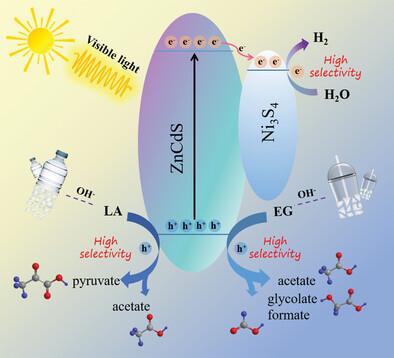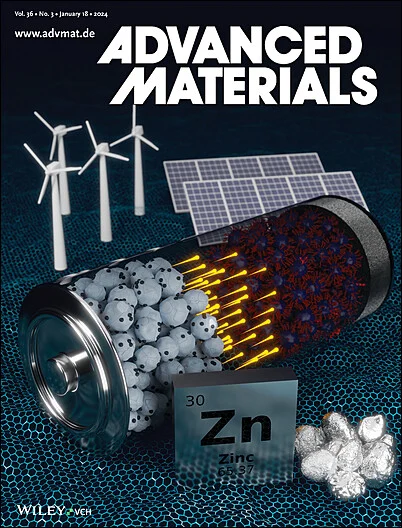An Electron Transfer Mediated Mechanism for Efficient Photoreforming of Waste Plastics Using a Ni3S4/ZnCdS Heterojunction
IF 27.4
1区 材料科学
Q1 CHEMISTRY, MULTIDISCIPLINARY
引用次数: 0
Abstract
The oxidative degradation of plastics in conjunction with the production of clean hydrogen (H2) represents a significant challenge. Herein, a Ni3S4/ZnCdS heterojunction is rationally synthesized and employed for the efficient production of H2 and high-selectivity value-added chemicals from waste plastic. By integrating spectroscopic analysis techniques with density functional theory (DFT) calculations, a solely electron transfer-mediated reaction mechanism is confirmed, wherein Ni3S4 extracts electrons from ZnCdS (ZCS) to promote the spatial segregation of photogenerated electrons and holes, which not only facilitates H2 production but also maintains the high oxidation potential of holes on the ZCS surface, favoring hole-dominated plastic oxidation. Notably, the catalyst exhibited efficient H2 production rates as high as 27.9 and 17.4 mmol g−1 h−1, along with a selectivity of 94.2% and 78.3% in the liquid product toward pyruvate and acetate production from polylactic acid (PLA) and polyethylene terephthalate (PET), respectively. Additionally, carbon yields of 26.5% for pyruvate and 2.2% for acetate are measured after 9 h of photoreforming, representing the highest values reported to date. Overall, this research presents a promising approach for converting plastic waste into H2 fuel and high-selectivity valuable chemical products, offering a potential solution to the growing issue of “White Pollution”.

求助全文
约1分钟内获得全文
求助全文
来源期刊

Advanced Materials
工程技术-材料科学:综合
CiteScore
43.00
自引率
4.10%
发文量
2182
审稿时长
2 months
期刊介绍:
Advanced Materials, one of the world's most prestigious journals and the foundation of the Advanced portfolio, is the home of choice for best-in-class materials science for more than 30 years. Following this fast-growing and interdisciplinary field, we are considering and publishing the most important discoveries on any and all materials from materials scientists, chemists, physicists, engineers as well as health and life scientists and bringing you the latest results and trends in modern materials-related research every week.
 求助内容:
求助内容: 应助结果提醒方式:
应助结果提醒方式:


